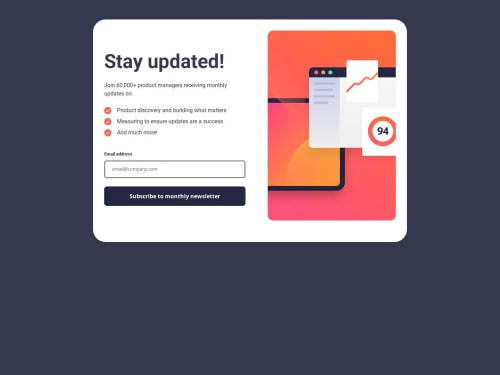Submitted 3 months agoA solution to the Newsletter sign-up form with success message challenge
Newsletter sign up with success message using Flexbox
P
@the-Exalter

Code
Loading...
Please log in to post a comment
Log in with GitHubCommunity feedback
No feedback yet. Be the first to give feedback on M Rafay's solution.
Join our Discord community
Join thousands of Frontend Mentor community members taking the challenges, sharing resources, helping each other, and chatting about all things front-end!
Join our Discord